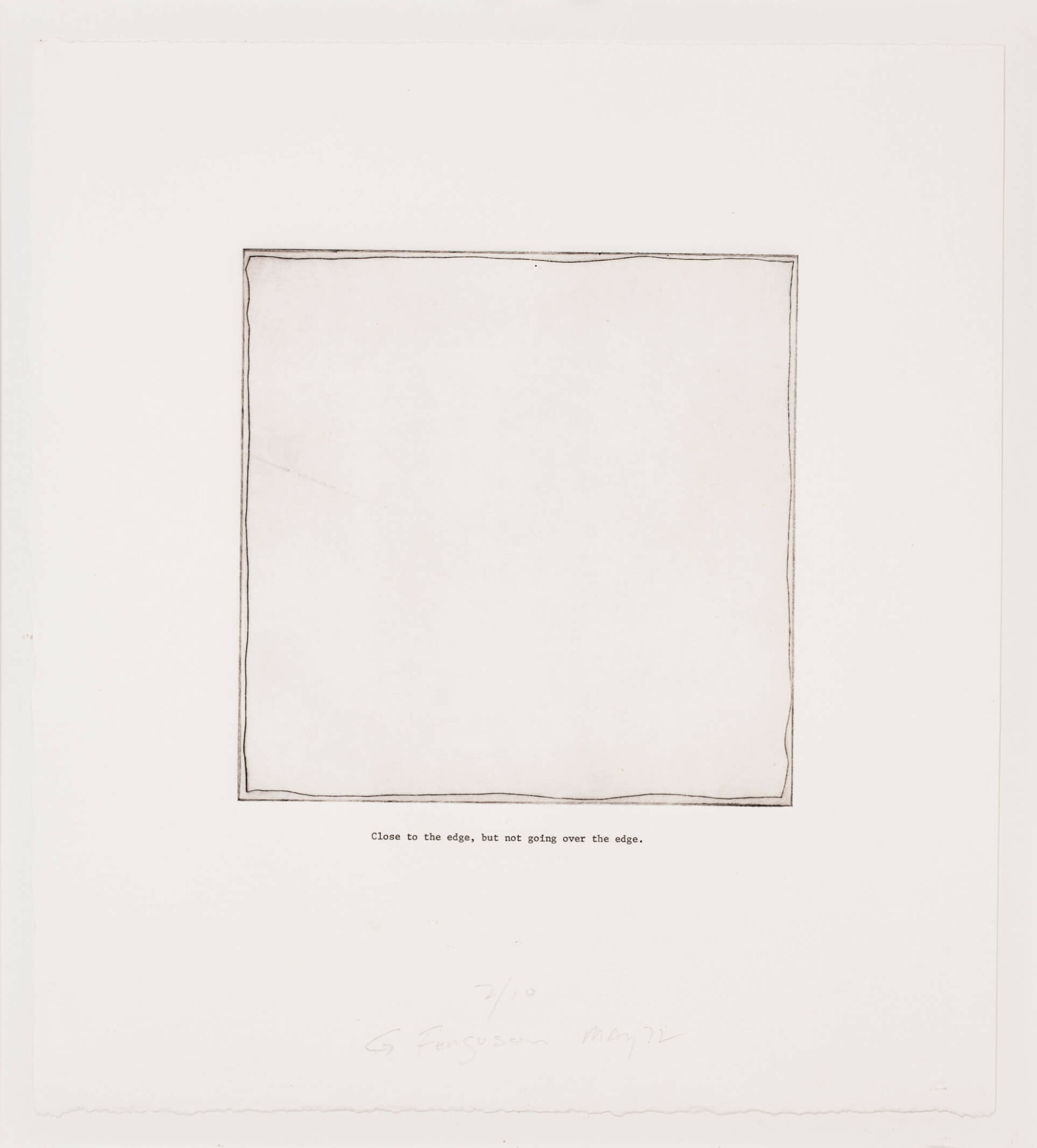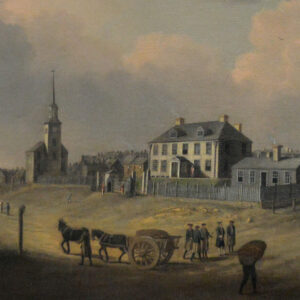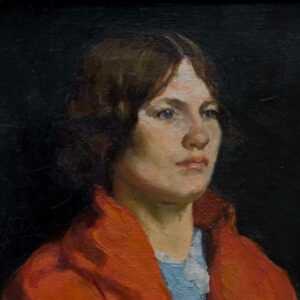Gerald Ferguson (1937–2009)

Gerald Ferguson, Close to the edge, but not going over the edge, 1972
Drypoint on paper, 2/10, plate: 20 x 20 cm
Art Gallery of Nova Scotia, Halifax
As described in a 2018 review of his work in Canadian Art: “In 1972, Gerald Ferguson took a six-inch-square copper plate, and using a stylus traced the shape of the plate, as close to the edge as he could go without slipping over it. The resulting dry-point etching was printed in an edition of ten. Ferguson typed the title on each print: ‘Close to the edge, but not going over the edge.’” As Ferguson later wrote, “This statement was both descriptive and metaphoric. It functioned well visually and as a self-parody and would later serve as a procedure and attitude in paintings that I began in 1972.”
-
Gerald Ferguson, Halifax City Hall – A Painting, 1980
Felt pen and oil on canvas; postcard, canvas: 122 x 183 cm; postcard: 10.5 x 15 cm
Art Gallery of Nova Scotia, Halifax -
Gerald Ferguson, Fish and Door, 1992
Enamel on canvas and painted wood, 213.3 x 223.5 cm
Art Gallery of Nova Scotia, Halifax
The “procedure” and “attitude” expressed by this statement were to push art, and specifically the art of painting, to its limits, to see how far from tradition and historical ideas he could go in his work, while retaining the fact of making a painting. Ferguson’s battle with painting was epic—and he took an uncompromising position that saw him reimagine painting’s possibilities. Whether using stencils and spray paint, or frottage with house paint, or hiring other painters to make his work for him, he never stopped trying to expand the limits of what paintings could be.
When Ferguson began teaching painting at the Nova Scotia College of Art, his first move was to remove all the easels from the studio, but he never abandoned the medium. “I needed painting’s physical and visual confirmation (and still do), along with all of the attendant strategies, structures and methods as intellectual reassurance,” he wrote. The easels, which were removed in 1968, quietly came back, though painting (and sculpture, and printmaking) at the school would never be the same.
Gerald “Jerry” Ferguson was born in Cincinnati, Ohio, on January 29, 1937. He began studying art in the graduate program at the University of Ohio in 1964. Ferguson went on to teach art, first at Wilmington College, and then at the Kansas City Art Institute. In 1967, however, one of his classmates from Ohio would reach out to him with an offer of a job in Halifax at the Nova Scotia College of Art (renamed the Nova Scotia College of Art and Design [NSCAD] in 1969). Ferguson moved to Halifax in 1968 and taught art history and painting. He established the famous NSCAD Lithography Workshop (1969–76), ran the school’s art galleries, and championed the creation of the NSCAD Press. As an artist, Ferguson was a major figure in Canada’s Conceptual art movement and was included in the Museum of Modern Art’s important Conceptual art exhibition, Information, in 1970.

 About the Author
About the Author
 More Online Art Books
More Online Art Books
 Acknowledgements
Acknowledgements